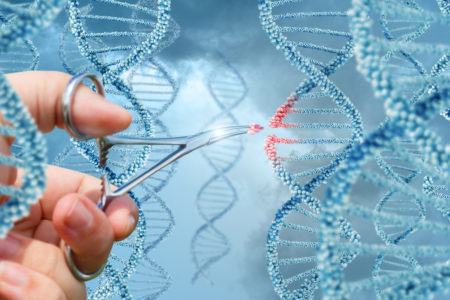Stanford’s Hank Greely on CRISPR People and Designer Babies

The possibility of designing genetically altered humans, capable of passing along their traits to future generations, has entertained sci-fi fans for decades. But in the real world, it has remained taboo, and for good reason: assuming it could even be accomplished, “human germline genome editing,” as it is called, poses daunting ethical and safety issues that have caused scientists to eschew it.
That changed in 2018 when a Chinese scientist, Dr. He Jiankui (known as JK), announced the creation of the first CRISPR babies—nonidentical twins whose DNA he edited while they were embryos. The births of “Nana” and “Lulu” shocked not only the scientific community, but the world at large, and was met with near-universal opprobrium.
Among the condemnors was Hank Greely, the Dean F. and Kate Edelman Johnson Professor of Law, and Professor by Courtesy of Genetics at Stanford School of Medicine, who specializes in the ethical, legal, and social implications of new biomedical technologies. “It was grossly reckless, irresponsible, immoral, and illegal,” says Greely.
In his recently released book, CRISPR People, Greely puts his comments in context, explaining the science behind gene editing, while telling the story of JK’s experiment and considering the future of human germline genome editing. Here he gives an overview of some of the basics.
What is CRISPR?
CRISPR is an acronym for Clustered Regularly Interspaced Short Palindromic Repeats. It’s a powerful and efficient gene editing tool that operates like the “find and replace” function in a word processor. CRISPR lets you find a “mistake”—or an undesirable section—in a cell’s DNA and then cut it out and replace it with a new DNA sequence.

What are its potential applications?
CRISPR is like a Swiss Army knife: it has a whole range of uses, from good to bad to silly. The good uses include pure research in embryos and treating genetic diseases in living people (gene therapy). And there are very good uses in non-human organisms—where we are perfectly happy to take bigger risks—such as modifying crops to make them more heat resistant. The bad—even evil—uses include anything related to bioterrorism, such as recreating small pox. And the silly uses include the somewhat frivolous things like creating green dogs, unicorns, or hypoallergenic cats.
Why is human germline genome editing particularly controversial?
To some people it seems like the strongest form of humans playing God. We are changing our own DNA, our own inheritance, our own structure, and recreating ourselves in ways that some people find deeply offensive religiously. Not to mention filled with hubris. And worrisome, because what if something goes wrong? It was controversial long before we could do it. Now the urgency has ramped up.
What was JK trying to accomplish and where did he go wrong?
JK was trying to replicate a gene mutation that made people less susceptible to HIV. Not only did he fail in the execution—he did not make the change he wanted—but he also made changes that have never been seen in humans, with unforeseeable consequences. And he knew that he had failed before he implanted the embryos in the mother’s womb. He was criminally reckless, he broke the law, and he lied about it. He is now serving a 3-year prison sentence.
What is the current scientific position on human germline genome editing?
Almost everyone agrees that it should not be done—yet. Maybe when it’s proven safe, which will take years. And some people think it should never be done.
What are the issues going forward?
The big issues are how this should be regulated: should it be banned entirely, or should it only be banned until it’s proven safe by rigorous methods. And even if it’s proven safe, should its use be limited? But all this becomes less important when you realize that very few people have a strong reason to do this. Almost everything that this can accomplish in the foreseeable future can be done in other ways that are better established and less risky. And the things that people are really worried about, like super babies, aren’t likely to be possible, at least in the next 50 years. I could be wrong. It’s an open empirical question. So, we should be prepared, but not panicked.
